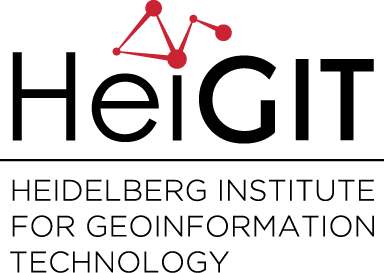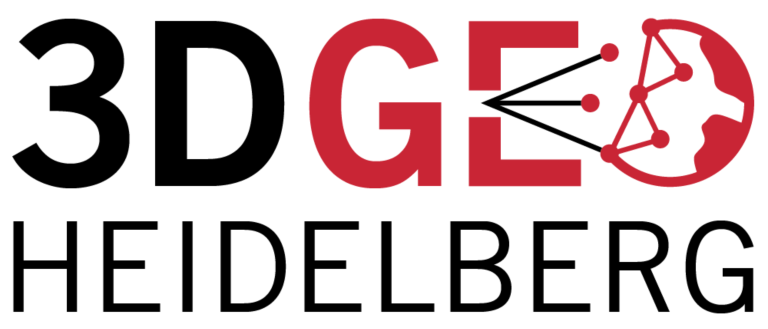Category: Research
-
New Academy Project on Interdisciplinary Neogeography in Natural Hazard Analysis in Chile
The research project NEOHAZ – NEOgeography of a Digital Earth: Geoinformation Science as Methodological Bridge in Interdisciplinary Natural HAZard Analysis is funded by the WIN-Kolleg of the Heidelberg Academy of Sciences and Humanities (HAW) and runs from 2014 till 2017. Project Description: The understanding of complex human-environment interactions via measuring and observing can only be…
-
GIS and LiDAR workshop at National Taiwan University, Taipei
The one-day workshop on the Orientation and Processing of Airborne Laser Scanning data, OPALS – From Points to Models, took place at the National Taiwan University in Taipei on 9 April 2014. The workshop was organized by the LiDAR Research Group of the GIScience Group at the Heidelberg University (Bernhard Höfle, Sabrina Marx), the Department…
-
Conference call: Remote Sensing and GIS for Monitoring of Habitat Quality
The conference web site: http://rsgis4hq.geo.tuwien.ac.at The International Workshop Remote Sensing and GIS for Monitoring of Habitat Quality, organized by GEO TU Wien and the Centre for Ecological Research of the Hungarian Academy of Sciences, will connect scientists, practitioners and stakeholders from the domains of remote sensing, GIS and habitat conservation, to discuss how recent developments…
-
Special Issue “Remote Sensing and GIS for Habitat Quality Monitoring”
Website: http://www.mdpi.com/journal/remotesensing/special_issues/rs-habitatmonitoring This Special Issue, “Remote Sensing and GIS for Habitat Quality Monitoring”, aims to pave the way for operational habitat quality monitoring from earth observation data for more effective habitat conservation. The demand for protecting biodiversity has been underlined by a number of recent international agreements, while the increasing size of protected habitats calls…
-
New exchange graduate student assistant from the University of São Paulo/Brazil
We are pleased to receive Luiz Fernando Assis as an exchange graduate student assistant at the GIScience research group. Luiz Fernando is pursuing his Masters’ in Computer Science at the Institute of Mathematics and Computer Science of the University of São Paulo in Brazil under the supervision of Prof. Dr. João Porto de Albuquerque, who…
-
Knowledge Based Urbanism – Science Places in the City – proposal nominated as “IBA Kandidat”
The future city of knowledge is the main topic of the “Internationale Bauausstellung Heidelberg” (IBA)., an international 10 years project. This week a selection of the project proposals answering the first call of proposal were invited to defend their ideas publicly to the IBA board of trustees at the “Alte Feuerwache”. Our proposal about raising…
-
Exploiting Big VGI to Improve Routing and Navigation Services
Due to development of communication technologies, the amount of data, which each organization has to deal with, has been rapidly growing. The huge volumes of data appear as an opportunity to improve the performance and reliability of various applications, as such routing and navigation services can be named. However, the analysis of large datasets, commonly…
-
AGILE 2014 Workshop: Digital Earth: What the hack? – 3 June 2014
Objective This workshop will elaborate on the possibilities of using geospatial information and processing across multiple sectors, and thereby implementing Digital Earth applications, i.e. applications of next-generation Geographic Information Systems (GIS) and Spatial Data Infrastructure (SDI). With this event, we initiate a coordinated discussion on the topic and through published guidelines prepare the ground for…
-
Laser scanning campaign at UNESCO World Heritage Site Lorsch Abbey
On Wednesday, 19th of March, the Kings Hall (Torhalle) facades at UNESCO World Heritage Site Lorsch Abbey were captured in 3D with a terrestrial laser scanner Riegl VZ-400 (provided by the Chair of GIScience) by Martin Hämmerle (LiDAR Research Group). The produced data set consists of about 65 million laser points and will allow for…
-
LVISA Expert User Contest – Winner of first prize
Today, the winner of the first LVISA Expert User Contest was awarded. The prize rewards the most valuable and extensive user feedback to the LVISA developers within the last year. The winner is Martin Hämmerle who receives a brand-new MS Kinect sensor (with portable screen) for 3D data capturing and a symbolic small tree to…
-
Information fusion infrastructure for remote-sensing and in-situ sensor data to model people dynamics
The term “real time” regarding airborne remote-sensing data can only seldom be found in recent literature on geospatial research. In the course of the German Aerospace Center (DLR) project VABENE, an airborne monitoring system has been developed which is able to pre-process remotely sensed images in real time by an on-board computing system. Afterwards, the…
-
New Release of LVISA – Exploring 3D Point Clouds of Trees in the Web
The LIDAR Research Group (LRG) released LVISA – a novel system for analyzing point clouds of vegetation. This system examplifies a web-based laser scanning database for the management and analysis of tree reference signatures. It combines techniques and methods of LiDAR and 3D GIScience. We present a new release of LVISA including re-designed and re-implemented…


